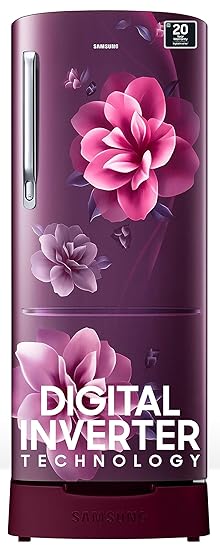
Table of Contents
Troubleshooting Your Samsung Smart Refrigerator Ice Maker Not Working
Samsung smart refrigerators are equipped with advanced features, including ice makers that provide convenience and efficiency. One of the standout features is the ice maker, which provides a steady supply of ice for beverages, parties, and everyday use. However, users may occasionally encounter issues with the ice maker not functioning properly. This article outlines common causes and troubleshooting steps to resolve the problem, like any appliance, the ice maker can sometimes encounter issues, leading to the frustrating situation of a Samsung smart refrigerator ice maker not working. In this comprehensive guide, we will explore the common causes of ice maker malfunctions, detailed troubleshooting steps, preventive measures, and when to seek professional help.
Understanding the Ice Maker System
Before diving into troubleshooting, it’s essential to understand how the ice maker in your Samsung refrigerator operates. Typically, the ice maker is connected to the water supply line, which fills the ice mold with water. Once the water freezes, the ice maker ejects the ice cubes into the storage bin. The entire process is controlled by a series of sensors and mechanical components that ensure efficient operation.
Common Causes of Ice Maker Malfunctions
- Clogged Water Filter
- Description: The water filter in your Samsung refrigerator is designed to remove impurities from the water supply. Over time, this filter can become clogged, restricting water flow to the ice maker.
- Symptoms: Reduced ice production or no ice at all.
- Water Supply Issues
- Description: The ice maker requires a consistent water supply to function. If the water line is kinked, frozen, or disconnected, the ice maker will not receive the necessary water.
- Symptoms: No ice production or irregular ice cube sizes.
- Temperature Settings
- Description: The temperature in the freezer compartment is critical for ice production. If the temperature is set too high, the ice maker may not operate correctly.
- Symptoms: Ice cubes may be small, misshapen, or not produced at all.
- Ice Maker Switch
- Description: Many Samsung refrigerators have a dedicated switch for the ice maker. If this switch is turned off, the ice maker will not produce ice.
- Symptoms: Ice maker appears inactive.
- Faulty Ice Maker Assembly
- Description: If the ice maker is still not functioning after checking the above factors, there may be an issue with the ice maker assembly itself, including the motor, sensors, or other internal components.
- Symptoms: Ice maker does not respond or makes unusual noises.
Detailed Troubleshooting Steps of Samsung Smart Refrigerator Ice Maker Not
If you find yourself in a situation where your Samsung smart refrigerator ice maker not working, follow these detailed troubleshooting steps to identify and resolve the issue.
Step 1: Inspect the Water Filter
- Action: Locate the water filter in your refrigerator. It is usually found in the upper right corner of the fridge compartment or at the bottom of the refrigerator.
- Check: Remove the filter and inspect it for any signs of clogs or damage. If it appears dirty or has been in use for more than six months, it’s time to replace it.
- Replacement: Purchase a compatible Samsung water filter and install it according to the manufacturer’s instructions. After replacing the filter, allow a few hours for the ice maker to start producing ice again.
Step 2: Check the Water Supply Line
- Action: Examine the water supply line connected to the back of the refrigerator.
- Check: Ensure that the line is not kinked, frozen, or blocked. If you notice any issues, straighten the line or thaw it if frozen.
- Connection: Verify that the water supply line is securely connected to the refrigerator and the water source
Step 3: Adjust Freezer Temperature
- Action: Open the freezer compartment and check the temperature settings.
- Check: Ensure the temperature is set to 0°F (-18°C) or lower. If it’s set higher, adjust it to the appropriate setting.
- Wait: Allow the freezer to stabilize at the new temperature for several hours before checking the ice maker again.
Step 4: Examine the Ice Maker Switch
- Action: Locate the ice maker switch, which is typically found on the ice maker itself or within the refrigerator controls.
- Check: Ensure that the switch is in the “on” position. If it was turned off, switch it back on.
- Wait: After turning on the switch, give the ice maker some time to start producing ice.
Step 5: Reset the Ice Maker
- Action: Some Samsung models have a reset button on the ice maker.
- Check: Refer to your user manual to locate the reset button.
- Wait: After resetting, allow the ice maker some time to start functioning again.
Step 6: Inspect the Ice Maker Assembly
- Action: If the ice maker is still not working, it may be time to inspect the assembly.
- Check: Look for any visible signs of damage or malfunction, such as broken components or unusual noises.
- Professional Help: If you suspect a faulty ice maker assembly, it’s best to consult a professional technician or contact Samsung support for assistance.
Preventive Measures
To avoid future issues with your Samsung smart refrigerator ice maker not working, consider implementing the following preventive measures:
- Regularly Replace the Water Filter: Change the water filter every six months or as recommended by the manufacturer to ensure optimal water flow and ice production.
- Monitor Water Supply: Periodically check the water supply line for kinks or blockages. Ensure that it remains securely connected.
- Maintain Proper Temperature: Regularly monitor the freezer temperature to ensure it remains at 0°F (-18°C) or lower.
- Keep the Ice Maker Clean: Regularly clean the ice maker and storage bin to prevent ice buildup and ensure proper operation.
- Check for Ice Blockages: Occasionally inspect the ice bin for any ice blockages that may prevent new ice from being produced.
When to Seek Professional Help
If you’ve followed all the troubleshooting steps and your Samsung smart refrigerator ice maker not working still, it may be time to seek professional help.
- Persistent Issues: If the ice maker continues to malfunction despite troubleshooting efforts.
- Unusual Noises: If you hear strange sounds coming from the ice maker or refrigerator, it may indicate a mechanical issue.
- Water Leaks: If you notice water pooling around the refrigerator, it could signify a more serious problem that requires immediate attention.
- Warranty Coverage: If your refrigerator is still under warranty, contacting Samsung support is advisable to avoid voiding any coverage.
Conclusion of Smart Refrigerator Ice Maker Not Working
Dealing with a Samsung smart refrigerator ice maker not working can be a frustrating experience, but many issues can be resolved with simple troubleshooting steps. By understanding the common causes of ice maker malfunctions and following the outlined steps, you can often restore your ice maker to full functionality.Regular maintenance, such as replacing the water filter and monitoring temperature settings, can help prevent future issues. However, if problems persist, don’t hesitate to seek professional assistance. With the right care and attention, your Samsung smart refrigerator can continue to provide you with the convenience and efficiency you expect.By staying proactive and informed, you can ensure that your ice maker remains a reliable feature in your home, keeping your beverages cool and your gatherings enjoyable.

